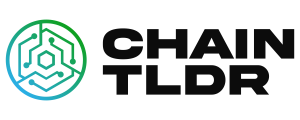Web3 is the next phase of the internet, allowing users to own digital assets, transact online, and have more control of their personal data through blockchain and crypto ecosystems.
Introduction
The emergence of Web3, a decentralized and permissionless internet, is set to revolutionize the way we interact online. Digital assets, such as cryptocurrencies, are playing a key role in this new era, providing native digital payments and enabling the creation of decentralized autonomous organizations (DAOs).
By distributing communication power rather than granting it to central authorities, Web3 is set to create a more community-centered online experience, free from the exploitation of users’ personal data and the concentration of power at the hands of a few centralized social media platforms.
With digital assets at the heart of Web3, the future of the internet looks brighter than ever.
Web2 is different from Web3
Web2 has enabled users to interact with online content, but has been criticized for data tracking, ownership, and censorship issues.
Web3 is the next step in the evolution of the internet, promising decentralization, trustlessness, and permissionlessness.
Blockchain and crypto are essential technologies of Web3, allowing users to record information on-chain, tokenize assets, and create digital identities. Web3 could bring about digital ownership, digital-native payments, and censorship-resistance, creating a better internet for all.
Blockchain, Crypto & Web3
Blockchain and crypto are integral to the Web3 ethos of decentralization, permissionlessness, trustlessness, payment rails, ownership, and censorship resistance.
Blockchain-based projects replace proprietary systems of traditional companies with openly available code, eliminating the need to trust any third party.
Cryptocurrencies can serve as the digitally native payments infrastructure of Web3, improving the expensive and bulky payment infrastructure of Web2.
Crypto also offers tools like self-custodial crypto wallets that allow users to store their funds without intermediaries.
Blockchains are designed to be censorship-resistant, meaning that no party can unilaterally alter the record of transactions.
These features can help Web3 users to decentralize, transact without trust, and preserve speech from government and corporate censorship.
Blockchain and cryptocurrency are not essential for Web3, but they can play an important role in its development.
Blockchain technology can provide the infrastructure for Web3, while cryptocurrency can provide digital-native payment rails and unlock a universe of use cases. Other technologies such as augmented reality (AR), virtual reality (VR), the internet of things (IoT), and the metaverse can also be essential for the new era of the internet.
Non-fungible tokens (NFTs) can help verify identity and ownership within the digital realm, allowing users to maintain control of their personal data. Together, these technologies can help make the internet more immersive and connected to the real world.
Web3 is the next generation of the internet, and blockchain and crypto are set to revolutionize it. With blockchain technology as its foundation, Web3 will enable users to display digital collectibles, create and maintain unique digital identities, and coordinate and enforce collective action through decentralized autonomous organizations (DAOs).
NFTs will help users to display digital collectibles, while DAOs will empower people to organize around a shared interest without a central decision-making authority.
All activity and votes will be visible on a blockchain, making Web3 more decentralized, transparent, and community-centered.













